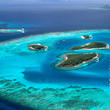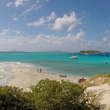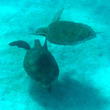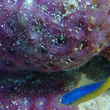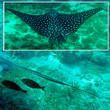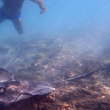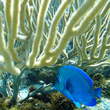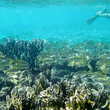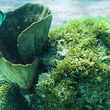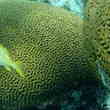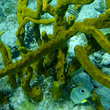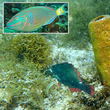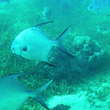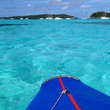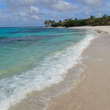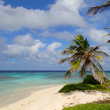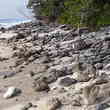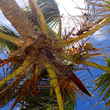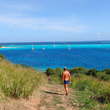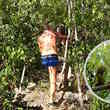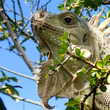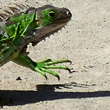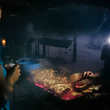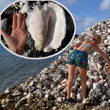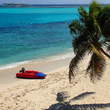This page is an automated translation of /nl/tobagocays.html and is awaiting a manual review.
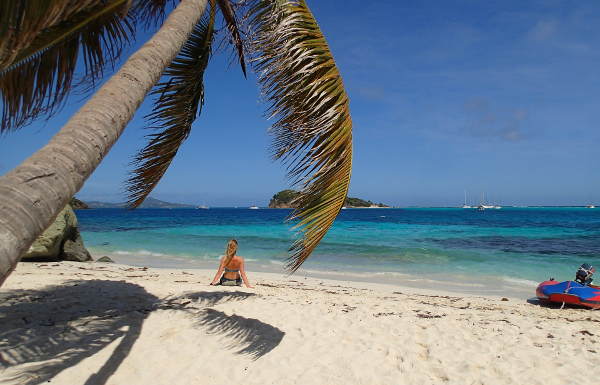
We had already read many enthusiastic reports about the Tobago Cays. The Tobago Cays were our main destination in the Caribbean, but because the islands are uninhabited and you cannot clear them, you cannot go there directly. After clearing Union Island, however, there was nothing to stop the Tobago Cays.
The Tobago Cays are a group of small islands enclosed by coral reefs in the Atlantic Ocean. The interplay between the bottom and the shallows gives the water a turquoise color and together with the white beaches fringed by palm trees, the picture results in a whole of unreal beauty. Add to that the sea turtles that swim around here, the stingrays that swim under you, the iguanas that keep an eye on everything on the islands, and you can imagine that we don't want to leave here for a while.
Every day starts with "where will we go snorkeling today?" and ends with "how will we have dinner tonight?". There are no restaurants and shops here, but fishermen come along with their catch and bbqs are organized on the beach of the main island.

The water is shallow in the Tobago Cays, most of it less than 4 feet deep. It takes some getting used to when it comes to sailing and anchoring, but the crystal clear water and white sand allow you to see the bottom well. From the surface you can see the shadow of the boat moving along on the bottom. Because it is so shallow, you don't have to dive, but you can see everything while snorkeling. Already while entering the Tobago Cays we regularly see sea turtles gasping for air and later while snorkeling we actually see the sea turtles swimming around us. They swim stately, with slow steady strokes, but we have to do our best to keep up with them while swimming.
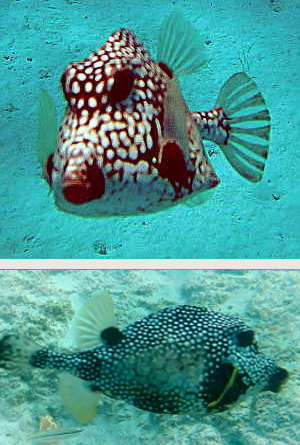
Under water it is very busy. It is not too bad above the white sand, but once at a reef it is crawling with colorful fish. Here and there we also see a large stingray, possibly hiding itself in the white sand. The ground is dotted with the famous conch shells and white sea urchins. We see life all around us all the time, as if we were swimming in a well-stocked aquarium. It is forbidden to fish here, so the underwater world is not shy. Some fish even come to see us with curiosity. Occasionally we see a small shark.
It is also certainly worthwhile on land. You are usually the only one on the white beach and you have the palm trees to choose from. Watch out for falling coconuts because they cause many more victims worldwide than sharks. We see iguanas lounging everywhere between the bushes and in the trees.
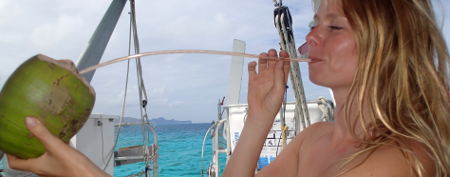
We also visit the island of Petit Tabac where part of the movie "Pirate of the Caribbean" was filmed. It is the beach where a treasure is found, not gold but a large stock of rum. The rum is now gone but the island is still there. It is full of coconuts and we take one for "research". Coconuts look different from the "coconuts" that are in our store. It should have a green shell around it and somewhere inside is the "nut" that we sell as "coconut". But coconuts are actually best edible as long as the green skin is still around them.
Beach BBQs are organized on the main island. You can bring your own drink (but the rum punches served aren't really bad either) and you get a lobster and the contents of some conch shells. If you eat on the boat, a local boat boy will come along and offer you a fish. There are no ATMs, but luckily we can easily last a week with the supplies we have on board. Our water maker is working overtime so that a week later we leave the Tobago Cays with more drinking water than we had with us. Drinking water made from seawater from the Tobago Cays! Our next destination is Bequia.
We took almost 1000 photos a week at the Tobago Cays, haha, really! In the slideshow below we show a number of them. I hope you look at it because figuring out/uploading was a long time.
Sailors
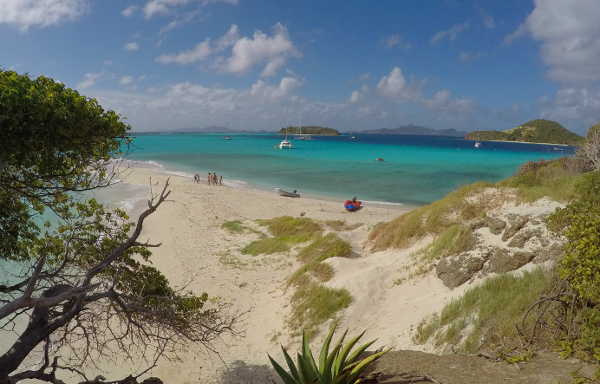
You often meet nice people in a nice place. And when it comes to fellow sailors, chances are that you will meet them again later somewhere. While writing this blog, we are already some islands further and we came across the following people again to our surprise.
Here we meet Oren and Tanya, an Israeli couple who have been cruising the world for eight years. They travel low budget to be able to continue their journey as long as possible and have valuable experiences and tips for us. They often get or buy vegetables in larger quantities, but it is all ripe at the same time and how do you keep it well at sea? They appear to have read the same book as us and have tried the described solution: they dry the vegetables in a homemade drying machine. They too know the problem that you usually catch bigger fish in the ocean than what fits in your fridge, but they don't even have a fridge! They "preserve" the fish, by putting the pieces of fish in large glass jars and heating the jars in a pressure cooker for a long time. When the now sterile content cools down, the jar draws vacuum and remains airtight and the content can no longer spoil. We can eat with us and get dried bananas, mangos and a fish salad made from tuna that they caught six months earlier. The idea took some getting used to, but the food tastes delicious! We are overloaded with travel tips, interesting ideas and take over a travel guide for the Panama Canal from them.
Halfway through our stay on the Tobago Cays we see the TiSento anchoring, the boat of Bas and Agnes, two Dutch people we have never met before but whose blog we follow because they left a year earlier than us. Of course we pass by with our dinghy and shout to them that we know their blog. And of course we are invited for a drink. Bas and Agnes have more time for their trip than we do and spent a year in the Caribbean to spend the winter. There are some cozy drinks hours on both boats.
During a beach BBQ we meet the crew of the Zeebink, two brothers, their father and a friend. They have just crossed the ocean and the father is returning home a few days later. The boys have different travel goals than we do, but always something comes in between so that we suddenly meet them at "our" next destination.
While climbing a mountain on one of the Tobago Cays islands we meet a Canadian family who we meet again later on Bequia and where we are invited for dinner on their catamaran on Christmas Eve. But that story is something for the next blog about Bequia.
